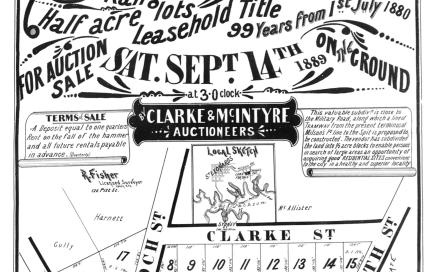|
EstatesThe British colony of New South Wales was established in 1788 primarily to relocate convicts from overcrowded prisons to a place where there was ample land to distribute to emancipated felons so that they might take up ‘worthy’ occupations.This done, it was hoped they would never return to Great Britain. Of course, this scheme was premised upon the notion that no one had ownership of the eastern half of Australia beforehand. This is the doctrine of 'terra nullius', or nobody's land, that underpinned the dispossession of Aboriginal people across Australia. The obvious presence of first peoples was dismissed as inconsequential both because they did not apparently till the soil, which would have been evidence of tenure for the Europeans, and their numbers were seemingly small. Interestingly Joseph Banks, who travelled with James Cook in 1770 when the east coast was claimed for King George III, used observations of Aboriginal architecture to deduce the size of the local population: 'their houses and sheds in the woods which we never faild to find convincd us of the smallness of their parties'. (The Endeavour Journal of Joseph Banks) Between the 1790s and 1831, when the granting of what was essentially free land ended, thousands of hectares in New South Wales were redistributed by the colonial authorities without consultation with or compensation to the traditional owners. As politician, merchant and land owner Alexander Berry would reflect at the end of a long and prosperpous life in the 1870s, 'The Australians colonies are the cheapest conquest ever made by England'. As well as ex-convicts, many free settlers received parcels of land to ‘improve’ by clearing for cropping or grazing. These were mainly merchants, farmers, and skilled tradespeople. Military men and ships’ surgeons also did well out of the redistribution of land. Convict labour was often used to develop the land. Large areas of present-day North Sydney were granted, and sold, to a few individuals in the first half of the 19th century. Former convict Billy Blue received all of present-day Blues and McMahons Points. James Milson received land around present-day Milsons Point and bought elsewhere in Kirribilli. In the early 1800s the merchant Robert Campbell acquired land granted to the convict Samuel Lightfoot, and Robert Ryan of the New South Wales Corp as early as 1794. John Piper, who was in charge of Customs, bought all present-day Neutral Bay around 1817. With his bankruptcy in the late 1820s this huge parcel of land, sometimes called the Thrupp Estate, was bought by the Cooper family who retained most of it through to the 1900s. Around 1820 merchant Edward Wollstonecraft received 526 acres comprising most of present-day Wollstonecraft, Waverton and Crows Nest. This land passed into the already considerable holdings of Wollstonecraft's partner Alexander Berry. The names of the early owners and houses live on in place and street names. These estates, and indeed lands that remained in Crown possession, were gradually portioned and sold in the mid to late 19th and 20th centuries through auctioneers and real estate agents. Often the new parcels were also called estates and named after the original landowner, the vendor or some defining characteristic of the place. For instance, a section of John Cooper’s land was subdivided as the Cooperville Estate with 99 year leases in 1889. Leasing, rather than buying land outright as freehold, was common in the 19th century. Leaseholds were generally converted to freehold in the 20th century. The history of these developments has had an important impact on the architectural character of North Sydney particularly when the Estate was developed within a short period. Many of the houses on the Cooperville Estate were built in the early 1900s and these streets still retain something of their original architectural character. Areas of Wollstonecraft and Crows Nest also contain streets lined with late 19th and early 20th century houses that once characterised these entire suburbs.
|
|




